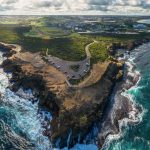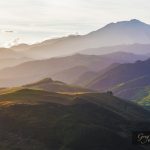Recently I was browsing some photos of a photographer I liked and saw this beautiful photo of waterfall with smooth water flowing between the rocks. Then in the comments below I saw a question from someone asking how to make this “smooth water” effect. There was no answer in the comments.
Though I think that many even beginner photographers know answer to this question I decided to write here a short explanation on the subject and also provide additional useful info that I learned while trying to achieve this effect.
The “Smooth Water” effect
The effect of smooth water is achieved by using long exposure. The longer you set the exposure (starting with about 1/4s) the smoother the water will be. It happens because water doesn’t stay still like the surrounding rocks, but constantly flows, so during all that time that your shutter is open, the water slightly “changes” its appearance many times, which results in the smooth water effect. But it is not always simple to achieve this effect:
First of all you absolutely need a tripod. You need everything else besides water to remain sharp, but if you will hand-hold your camera and shoot with long exposure setting, everything will be blurred due to camera shake. If you don’t have a tripod you can try placing your camera on a rock (or anything that doesn’t move) and composing your shot from there, though it won’t give you the freedom of the tripod.
Additional problem that can be a serious one – if you are shooting on bright sunny day, there may be too much light for long exposure that will result in burned photos. So you are stuck with either not smooth water or a burned photograph. What can you do in such situation?
- First – check your ISO settings and make sure that you are on the lowest ISO possible in your camera.
- Second try closing the aperture as much as possible – lets say f22 (maybe less if you see that its enough).
- Third (not always an option) wait for some clouds to block the sun.
If nothing helps then, in order to achieve the smooth water effect you will have to put filter on your lens to reduce the amount of light reaching the sensor. There are two types of filters that I use: Neutral Density (ND) filters and Polarizing filter.
Neutral Density filters have different densities and they can reduce the amount of light entering the camera by 1, 2, or 3 stops. By using them you’ll actually make a bright day darker. The combination of ND filter, small aperture, and low ISO should do the job.
Polarizing filter (or simply polarizer) is widely used in Landscape photography. There is more to polarizer but now what matters is that this filter reduces the amount of light entering the camera by about 1.5 stops, thus acting like ND filter in this aspect. If the only filter you have is polarizer then put it on if see if this would be enough light reduction to use long exposure.
You can find more useful info about polarizer at Great Landscape Photography
So as you can see though the explanation of “smooth water” effect is pretty simple, it is not always easy (or even possible) to achieve without proper tools.






